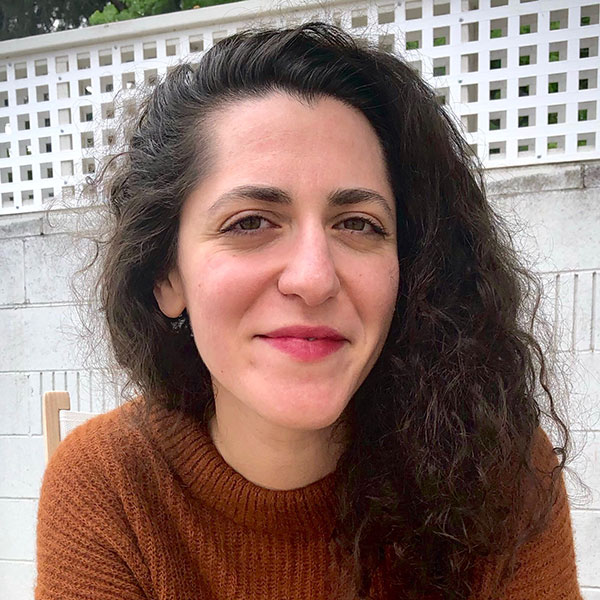“Every story is a mental health story,” said Ken LaZebnik (Touched by an Angel) when he hosted an online panel on mental health in February. “What we do is examine human behavior, the wounds to our souls, the Achilles heel, the wants, the haunting desires.”
The panel LaZebnik moderated was organized by WGAW’s Writers Education Committee and The Hollywood Committee (HC), an organization made up of writers and industry creatives that connects writers with mental health organizations.
Interest in mental health issues came to the forefront during the pandemic, notes HC board member and WGAW member Shawn Ryan (S.W.A.T.). “Whether it’s family members or friends, we’ve become far more acutely aware of mental health challenges and struggles,” he says.
The Pitt, Shrinking, The Chi, Bel Air, and The Good Doctor are just a few recent shows that have centered mental health conditions with accuracy and compassion. Even Joel in The Last of Us went to therapy, briefly.
Ryan calls himself out for not paying attention to such matters in his action shows previously. So after the first season of his thriller The Night Agent put FBI agent Peter Sutherland and civilian Rose Larkin in terrifying circumstances, he asked his writers, “If Peter and Rose were real people, and really went through the events of season 1, what would the impact on their mental health be?”
As a result, in season 2, we see Rose in therapy to deal with the horrors she’s experienced, while Peter tries shoving everything deep down to focus on work.
 WandaVision staff writer Laura Donney. Photo by Abby Leibman.
WandaVision staff writer Laura Donney. Photo by Abby Leibman.Writers’ assistant Lukas Johnson wrote episode 206, “A Good Agent,” which shows Rose in therapy. He met online with a psychologist who offered guidance on both the language and the emotion in those scenes. “We wanted to make sure we weren’t falling into any stereotypes that are commonly seen across media,” Johnson says.
The psychologist suggested that Rose might benefit from Eye Movement Desensitization and Reprocessing therapy (EMDR), but noted that the treatment had its critics. “We loved that this was cutting edge, and that he wasn’t saying this is the one thing that can solve your problems, because something that works for one person might not work for another,” Ryan says. “So we took that conversation and turned it into a section of dialogue” that ended up in episode 201, “Call Tracking.”
Trauma and loss underpin the shiny sitcom facades of WandaVision (created by Jac Schaeffer) coming to the foreground particularly in Episode 108, “Previously On,” written by staff writer and Laura Donney. “We jokingly called it the therapy episode,” Donney says. “I’m one of the more therapized people on the planet, so I felt very excited and honored and responsible towards this specific episode.”
Newly-revealed nemesis and witch Agatha forces Wanda to flash back in time to reveal the traumas that shaped her. After brutal losses she experienced from age 10 through adulthood Wanda used television to soothe her pain, unable to face it in a healthier fashion. A grief counselor came to the writers’ room to discuss the ways grief can manifest, as well as misconceptions. “We took a lot away from the session,” says Donney.
Donney’s biggest challenge was conveying the flashbacks concisely, because they were so rich. “And honestly, also making sure it was funny some of the time,” she says. “That was Agatha’s role, and that was a delicious thing to get to do.” Because dealing with grief invariably involves moments of humor as well.
Comedy is a sly way to address any number of mental health issues, as evidenced in Shrinking, Ted Lasso, and Crazy Ex-Girlfriend. “In Inside Out and Big Mouth, the personifications of a feeling are pretty powerful, when done in this interesting, grounded and also obviously silly way,” notes Donney.
The hilarious, vulgar Big Mouth (created by Nick Kroll & Andrew Goldberg & Mark Levin & Jennifer Flackett) centers on kids facing the wilds of puberty with dubious help from such creatures as the Hormone Monster and Shame Wizard.

The word ‘crazy’ used to be so easy to throw around, but I don’t do it anymore.
- Stasia Demick
WGAW member Brandon Kyle Goodman, who goes by BKG, has been on the show since the fourth season. They soon discovered that everyone in the writers’ room was in therapy.
BKG was also a consulting producer on the spinoff Human Resources, which finds creatures working with adults. They wrote episode 106, “The Light,” in which Lovebug Sonya ends up falling for Claudia, a human who shouldn’t be able to see her, and Claudia starts having manic episodes. “In the show, we say she’s sick, but it’s more of a bipolar experience,” BKG explains. “Claudia is this intelligent, lively, artistic, beautiful soul who also has this other thing going on that can hinder how she shows up. We didn’t want her to be a villain.”
It was important to BKG that Claudia was a Black character. “We often don’t talk about mental health in in the Black community, especially Black women,” they say. “As somebody who was raised by Black women, I watched them be so strong and not always take care of themselves. So this character Claudia gave audience members language to identify what’s happening, and permission to talk about it, to ask for help.”
Brilliant Minds, which premiered in 2024, was created by Michael Grassi and focused on neurological and mental health conditions. A neurologist was on staff, and when other experts were needed, the writers called upon Hollywood, Health & Society, a USC-based research project which tracks the impact of entertainment storylines
 The Young & The Restless script editor Marin Gazzaniga. Photo by Jonathan Grassi.
The Young & The Restless script editor Marin Gazzaniga. Photo by Jonathan Grassi.The organization connected staff writer Stasia Demick with consultants when she co-wrote episode 106, “The Girl Who Cried Pregnant” with William Yu. “The doctors had dealt with mass psychogenic illness and pseudocyesis,” she says. “They talked about how social factors can manifest physically in the body. The emphasis was on the humanity of these girls and their experience.”
“Both conditions had the word ‘hysterical’ in [their names] not even 40 years ago,” Demick says. (Hysterical pregnancy and mass hysteria, respectively.) “Those names have changed because of the strong misogynistic undercurrents in diagnoses. Realizing the power of our words, and how that can make people feel seen, reach out for help, get a diagnosis and destigmatize the language, is something we’ve all experienced, either personally or with a loved one.”
The series changed her own use of language. “The word ‘crazy’ used to be so easy to throw around, but I don’t do it anymore,” she says. “It taught me to be a better writer, to be smarter with my language, because that word has erased so many people’s experiences in the past. These small things have huge impact.”
It’s even quantifiable. According to the Norman Lear Center’s Media Impact Project, 83 percent of The Young & The Restless viewers surveyed said a plotline featuring character Chelsea as she dealt with depression and suicidal ideation “helped them feel compassion/empathy for those with mental health struggles, and that they learned about different coping skills while watching the storyline.”
“Soaps have always been on the cutting edge of portraying social and health issues,” notes Y&R script editor Marin Gazzaniga, via email. “We’ve gotten better at being more realistic about the emotional, psychological and personal impacts of mental health.” The writers used experts from The Kids Mental Health Foundation for a storyline focusing on young character Connor’s OCD.
“It’s a tricky line to walk because we’re a fictional daytime drama, so there are always constraints,” says Gazzaniga. “But all of our team feels a responsibility to getting these stories, in particular, right.”
For all the progress seen in these shows, there’s plenty of room to improve the representation of mental health challenges. Says BKG, “You can see when people haven’t done the research, or when it’s not specific to the experience, and someone is playing “crazy,” as opposed to the nuances of the experience.”
“We are constantly, molecule by molecule, shimmying in space; we’re not in a fixed state, ever,” adds Donney. “On TV it’s so tempting to put people in a box, because that helps to define character and story, but we lose fluidity and relatability when we do that.”




